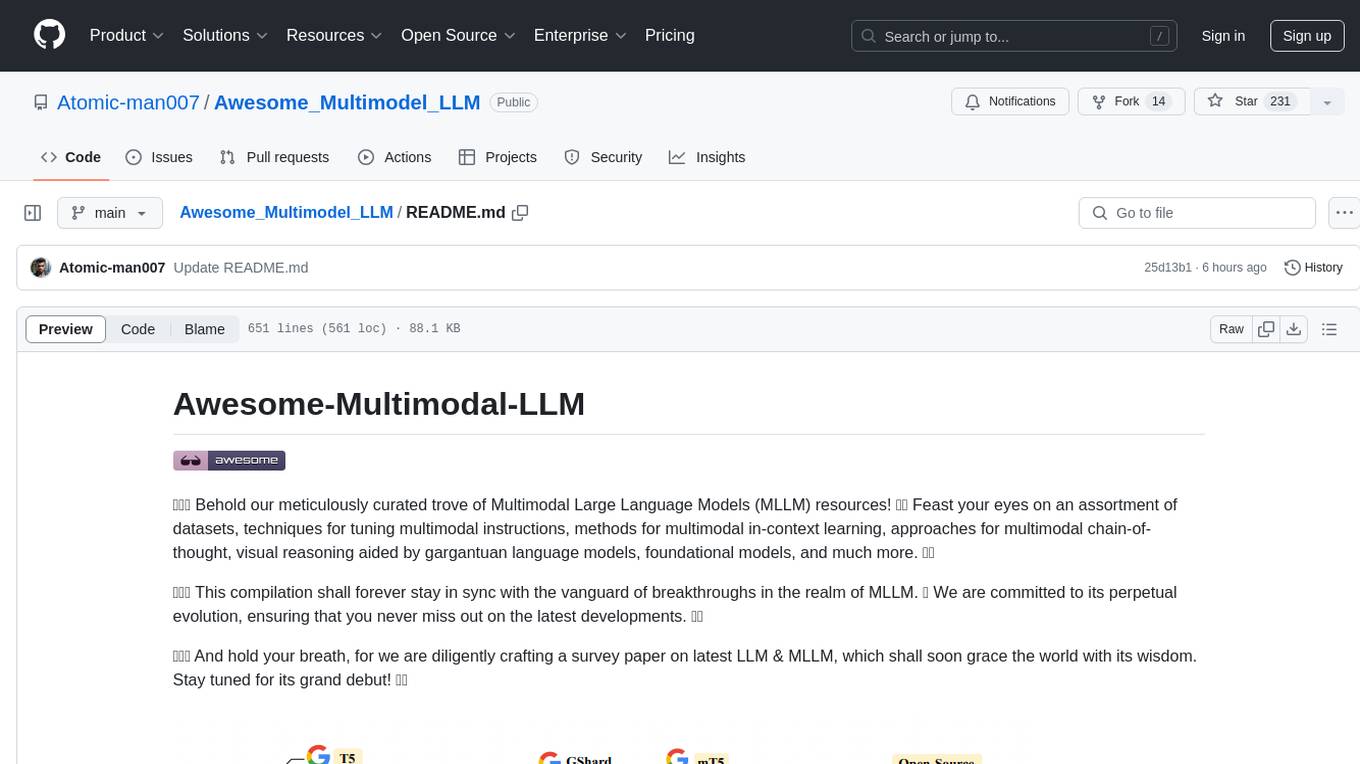
MMOS
Mix of Minimal Optimal Sets (MMOS) of dataset has two advantages for two aspects, higher performance and lower construction costs on math reasoning.
Stars: 61
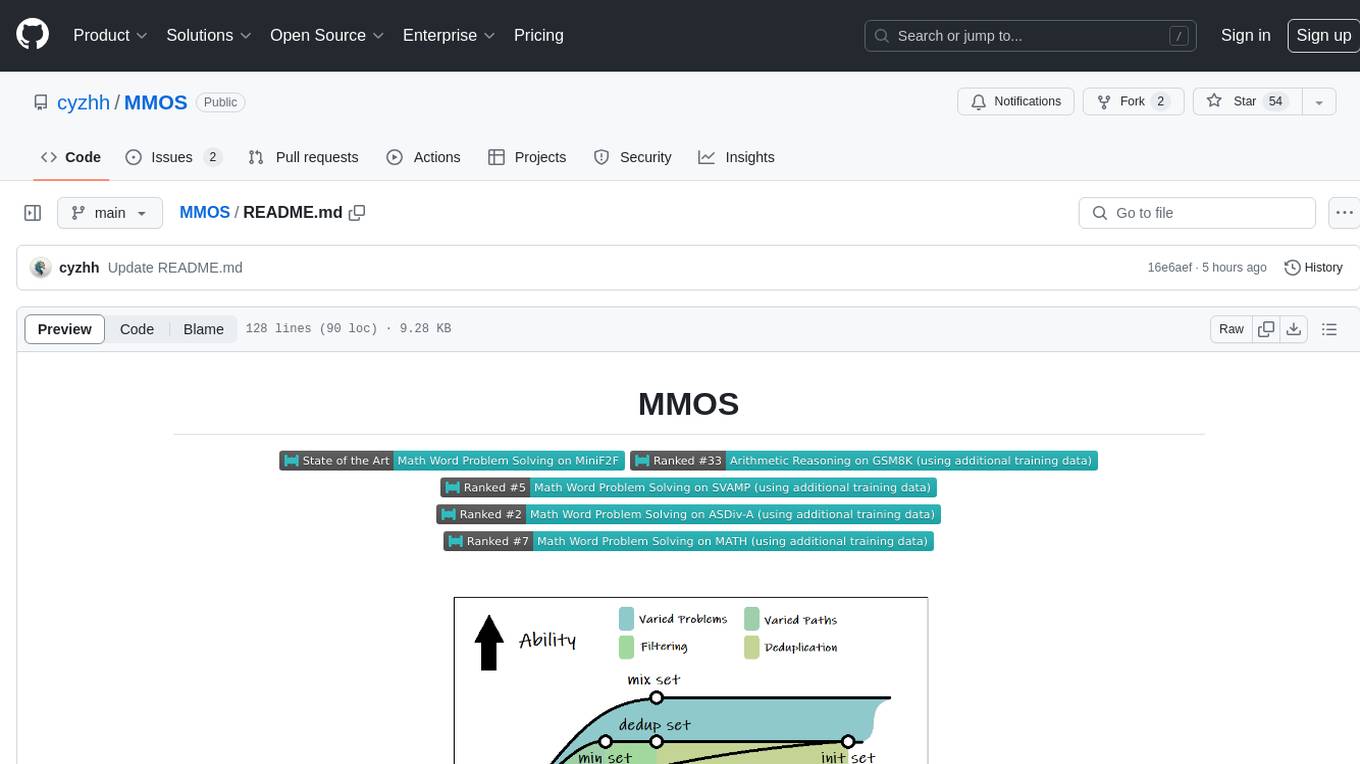
MMOS (Mix of Minimal Optimal Sets) is a dataset designed for math reasoning tasks, offering higher performance and lower construction costs. It includes various models and data subsets for tasks like arithmetic reasoning and math word problem solving. The dataset is used to identify minimal optimal sets through reasoning paths and statistical analysis, with a focus on QA-pairs generated from open-source datasets. MMOS also provides an auto problem generator for testing model robustness and scripts for training and inference.
README:
| ArXiv | Models | Data | Code |
- [2024/6/22] Revised the article and added attempts on automatic theorem proving tasks. Codes are in MMOS-F2F.
- [2024/3/30] Update result on MMOS-Code 34B and MMOS-LLEMMA 34B Notice the vllm and transformers version.
- [2024/3/8] 🔥🔥🔥Models MMOS-DeepSeekMath 7B show nice performence with self-consistency and k=50 !!
- [2024/2/28] 🔥 Models MMOS-DeepSeekMath 7B show nice performence and released at MMOS-DeepSeekMath 7B !!
- [2024/2/27] 🔥 Models MMOS-LLEMMA 7B show nice performence and released at MMOS-LLEMMA 7B !!
- [2024/2/27] 🔥 Models MMOS-CODE 13B and MMOS-CODE 34B released at MMOS-CODE 13B and MMOS-CODE 34B !!
- [2024/2/27] 🔥 Models MMOS-CODE 7B released at MMOS-CODE 7B !!
- [2024/2/26] 🔥🔥🔥 Dataset MMOS released at 😊 HuggingFace !!
- [2024/2/23] 🔥🔥🔥Arxiv released at An Empirical Study of Data Ability Boundary in LLMs' Math Reasoning ~
Mix of Minimal Optimal Sets (MMOS) of dataset has two advantages for two aspects, higher performance and lower construction costs on math reasoning.
| Model | Size | GSM8K | SVAMP | ASDiv | MATH | Size | GSM8K | SVAMP | ASDiv | MATH | Size | GSM8K | SVAMP | ASDiv | MATH |
|---|---|---|---|---|---|---|---|---|---|---|---|---|---|---|---|
| WizardMath | 7B | 54.9 | 57.3 | 59.1 | 10.7 | 13B | 63.9 | 64.3 | 65.8 | 14.0 | 34B | - | - | - | - |
| MAMMOTH | 7B | 53.6 | 67.7 | 31.5 | - | 13B | 62.0 | 72.4 | - | 34.2 | 34B | - | - | - | - |
| MetaMath | 7B | 66.5 | - | - | 19.8 | 13B | 72.3 | - | - | 22.4 | 34B | - | - | - | - |
| MathCoder-L | 7B | 64.2 | 71.5 | - | 23.3 | 13B | 72.6 | 76.9 | - | 29.9 | 34B | - | - | - | - |
| MathCoder-CL | 7B | 67.8 | 70.7 | - | 30.2 | 13B | 74.1 | 78.0 | - | 35.9 | 34B | - | - | - | - |
| TORA | 7B | 68.8 | 68.2 | 73.9 | 40.1 | 13B | 72.7 | 72.9 | 77.2 | 43.0 | 34B | - | - | - | - |
| TORA-CODE | 7B | 72.6 | 70.4 | 78.7 | 44.6 | 13B | 75.8 | 75.7 | 81.4 | 48.1 | 34B | 80.7 | 80.5 | 84.2 | 50.8 |
| MMOS | 7B | 69.9 | 73.4 | 76.8 | 40.2 | 13B | 74.8 | 77.0 | 80.0 | 43.2 | 34B | - | - | - | - |
| MMOS-CODE | 7B | 73.9 | 76.4 | 78.6 | 44.3 | 13B | 77.1 | 77.5 | 81.9 | 48.1 | 34B | 81.7 | 81.9 | 82.8 | 48.8 |
| MMOS-MinCODE | 7B | 70.3 | 72.5 | 76.7 | 44.6 | 13B | - | - | - | - | 34B | - | - | - | - |
| MMOS-LLEMMA | 7B | 76.5 | 77.7 | 81.4 | 48.8 | 13B | - | - | - | - | 34B | 82.8 | 81.8 | 84.8 | 51.3 |
| MMOS-DeepSeekMath | 7B | 80.5 | 79.3 | 87.6 | 55.0 | 13B | - | - | - | - | 34B | - | - | - | - |
| MMOS-DeepSeekMath(SC,k=50) | 7B | 87.2 | - | - | 63.7 | 13B | - | - | - | - | 34B | - | - | - | - |
git clone https://github.com/cyzhh/MMOS.git
cd MMOS
conda create -n MMOS python=3.10
conda activate MMOS
pip install -r requirements.txt
To identify the minimal optimal set, we follow these steps:
- Sample a sufficient number of correct reasoning paths to form initial set.
- Implement a deduplication algorithm to obtain its deduplicated subset.
- Conduct a statistical analysis on the upper limit of reasoning paths per question k with the subset data amount N.
- Perform SFT on several subsets to analyze the impact of removing duplicates and keeping varied reasoning paths.
We use ToRA series to generate QA-pairs from open source dataset GSM8K, MATH, TAL-SCQ. The QA-pairs are processed by our deduplication algorithm, resulting in the dataset MMOS. The total number of QA-pairs is 135K.
The DATA, which we publish at 😊 HuggingFace, need to be placed under the relative path, ./train_data/MMOS/.
If you are interested in our work, we will publish details about the data processing aspects after the paper is published.
Following scripts/generate.sh:
- Prepare your sampling results.
- Combine the results.
- Extract the true cases.
- Dedup the cases.
- (Filter) and rerank.
You can generate a data set for testing the numerical robustness of model performance by executing the following script command:
bash scripts/generate.sh
bash scripts/attack.sh
bash scripts/rerank.sh
Due to resource constraints, we performed supervised fine-tuning on CodeLLaMA 7B, CodeLLaMA 13B and CodeLLaMA 34B using our dataset on A100 40G GPUs. To reproduce our work from CodeLLaMA 7B/13B, you can train according to the following instruction. You can also train the 34B model through DDP script instructions.
bash scripts/train_single.sh codellama 7b
bash scripts/train.sh codellama 34b
bash scripts/infer.sh
If you find this repository helpful, please consider citing our paper:
@misc{chen2024empirical,
title={An Empirical Study of Data Ability Boundary in LLMs' Math Reasoning},
author={Zui Chen and Yezeng Chen and Jiaqi Han and Zhijie Huang and Ji Qi and Yi Zhou},
year={2024},
eprint={2403.00799},
archivePrefix={arXiv},
primaryClass={cs.CL}
}
For Tasks:
Click tags to check more tools for each tasksFor Jobs:
Alternative AI tools for MMOS
Similar Open Source Tools

MMOS
MMOS (Mix of Minimal Optimal Sets) is a dataset designed for math reasoning tasks, offering higher performance and lower construction costs. It includes various models and data subsets for tasks like arithmetic reasoning and math word problem solving. The dataset is used to identify minimal optimal sets through reasoning paths and statistical analysis, with a focus on QA-pairs generated from open-source datasets. MMOS also provides an auto problem generator for testing model robustness and scripts for training and inference.
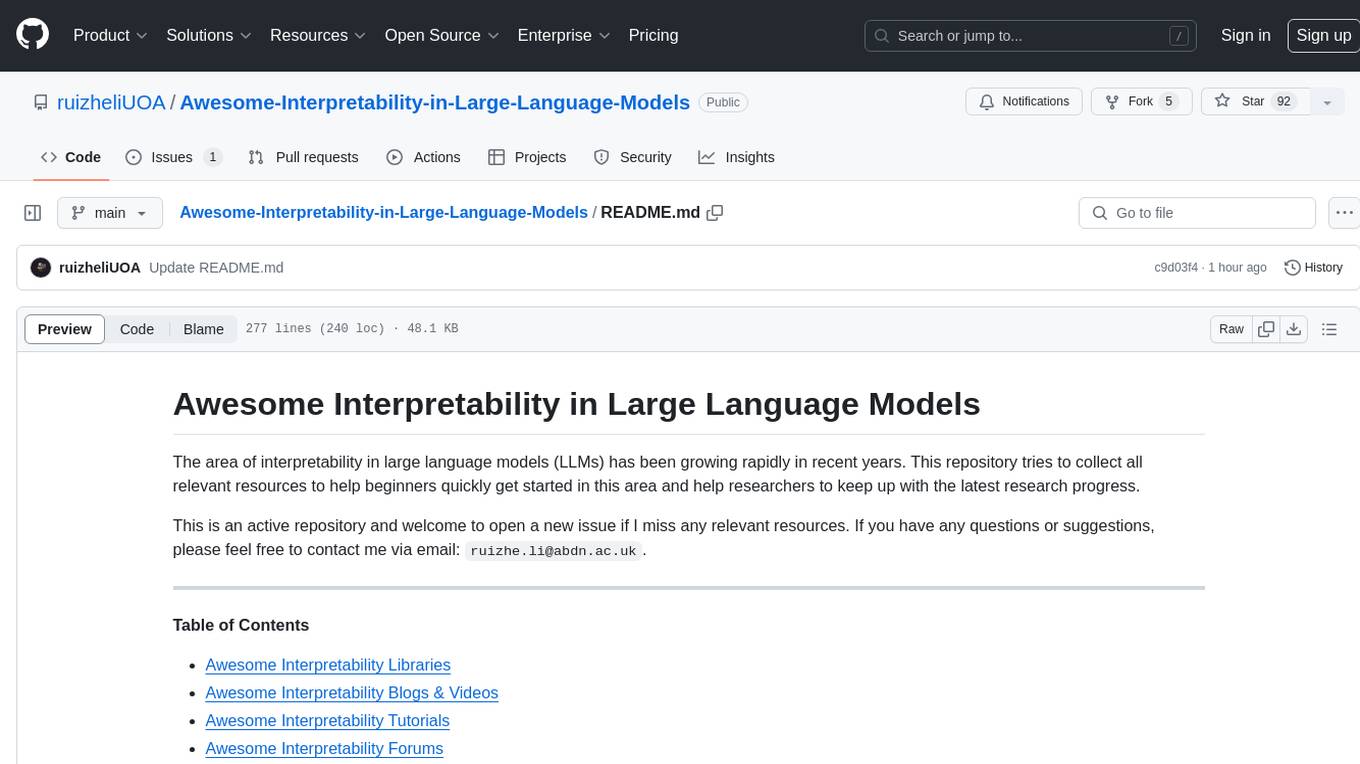
Awesome-Interpretability-in-Large-Language-Models
This repository is a collection of resources focused on interpretability in large language models (LLMs). It aims to help beginners get started in the area and keep researchers updated on the latest progress. It includes libraries, blogs, tutorials, forums, tools, programs, papers, and more related to interpretability in LLMs.
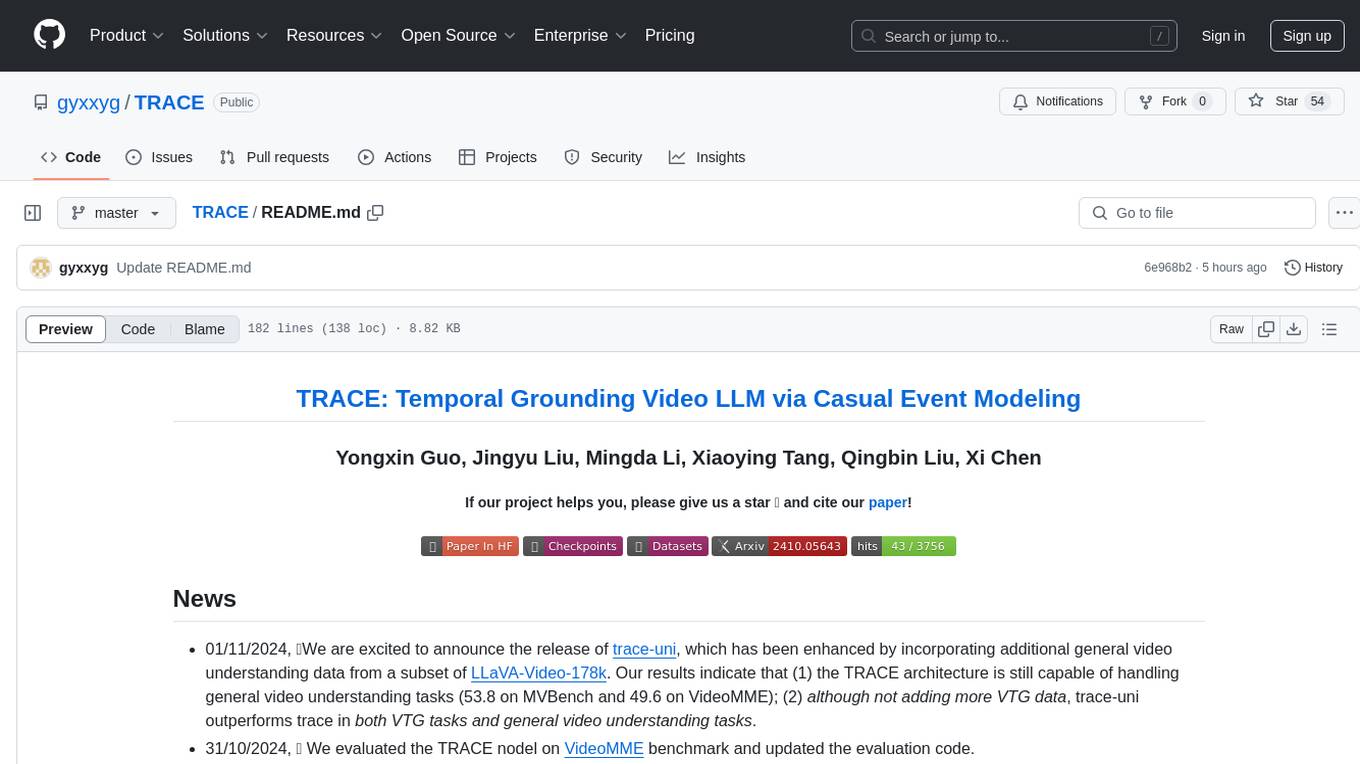
TRACE
TRACE is a temporal grounding video model that utilizes causal event modeling to capture videos' inherent structure. It presents a task-interleaved video LLM model tailored for sequential encoding/decoding of timestamps, salient scores, and textual captions. The project includes various model checkpoints for different stages and fine-tuning on specific datasets. It provides evaluation codes for different tasks like VTG, MVBench, and VideoMME. The repository also offers annotation files and links to raw videos preparation projects. Users can train the model on different tasks and evaluate the performance based on metrics like CIDER, METEOR, SODA_c, F1, mAP, Hit@1, etc. TRACE has been enhanced with trace-retrieval and trace-uni models, showing improved performance on dense video captioning and general video understanding tasks.
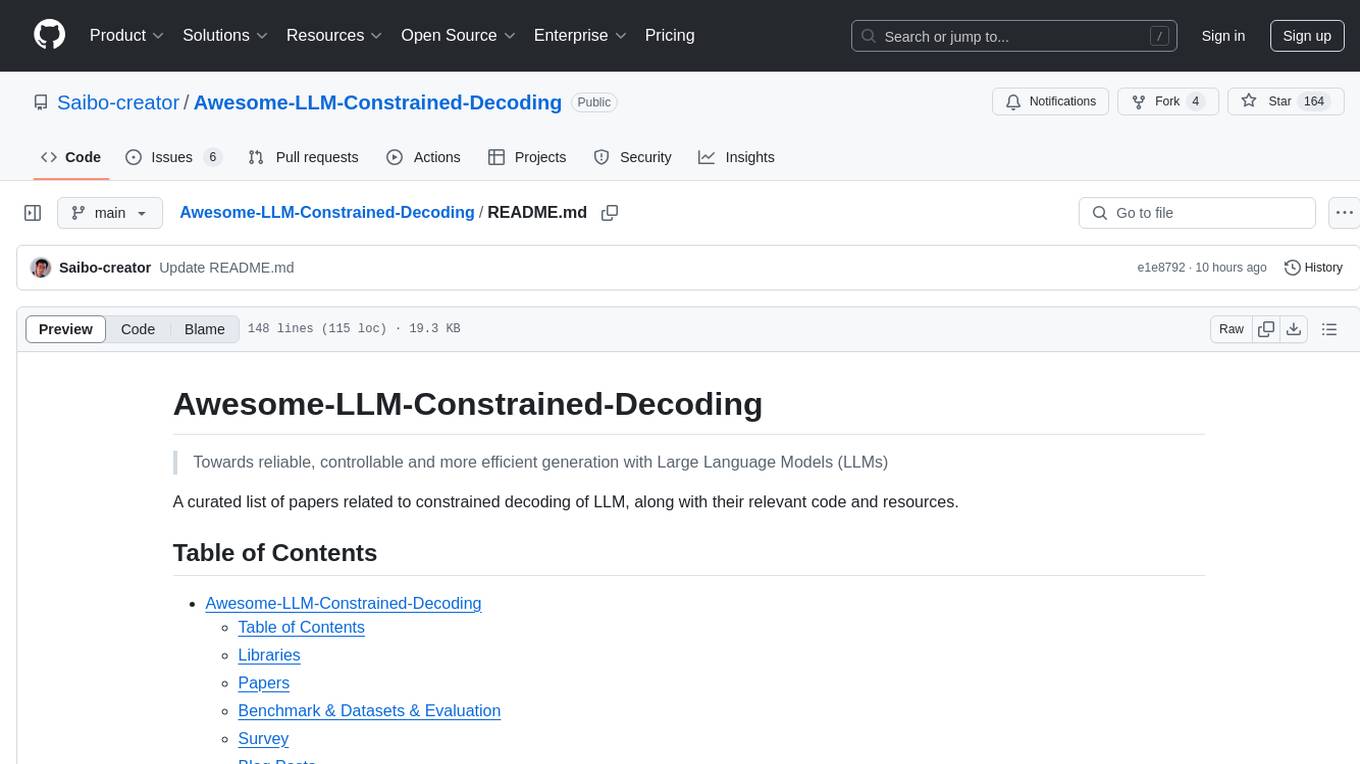
Awesome-LLM-Constrained-Decoding
Awesome-LLM-Constrained-Decoding is a curated list of papers, code, and resources related to constrained decoding of Large Language Models (LLMs). The repository aims to facilitate reliable, controllable, and efficient generation with LLMs by providing a comprehensive collection of materials in this domain.
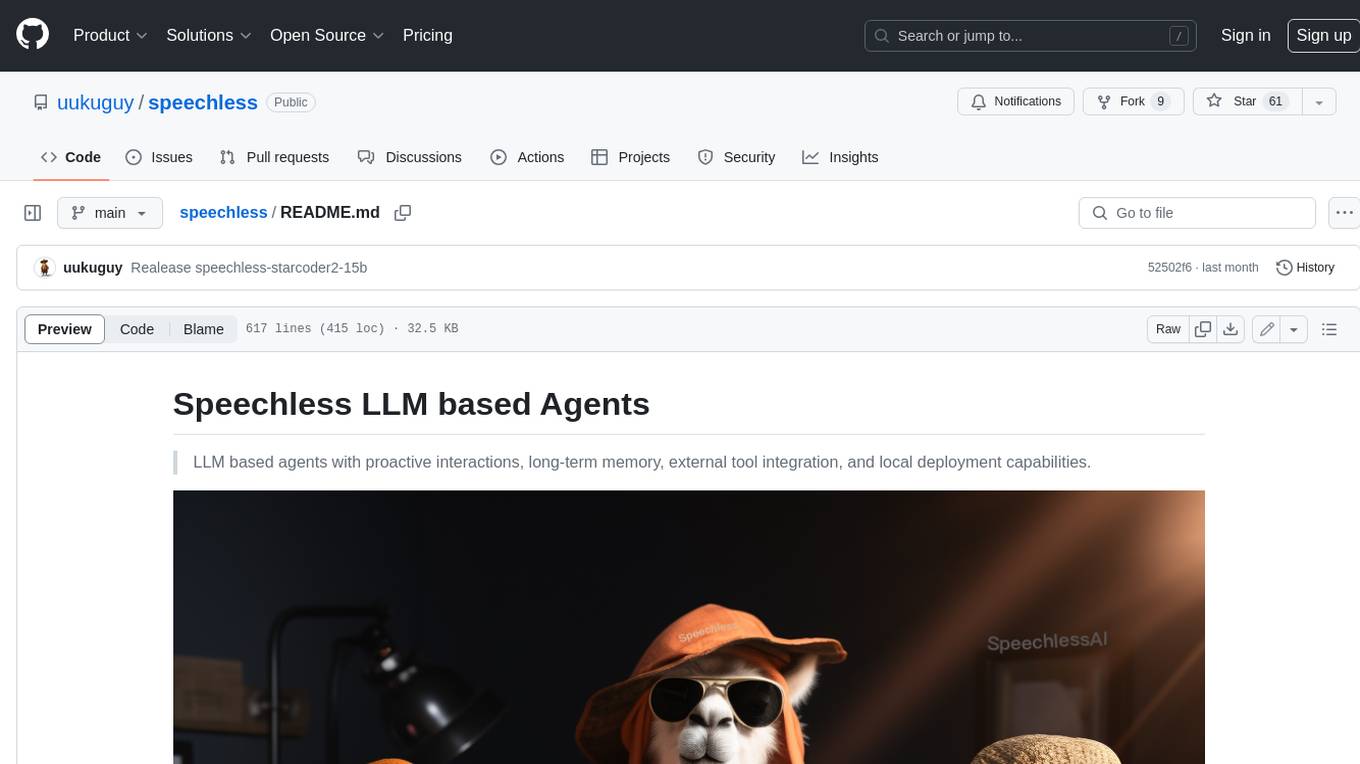
speechless
Speechless.AI is committed to integrating the superior language processing and deep reasoning capabilities of large language models into practical business applications. By enhancing the model's language understanding, knowledge accumulation, and text creation abilities, and introducing long-term memory, external tool integration, and local deployment, our aim is to establish an intelligent collaborative partner that can independently interact, continuously evolve, and closely align with various business scenarios.
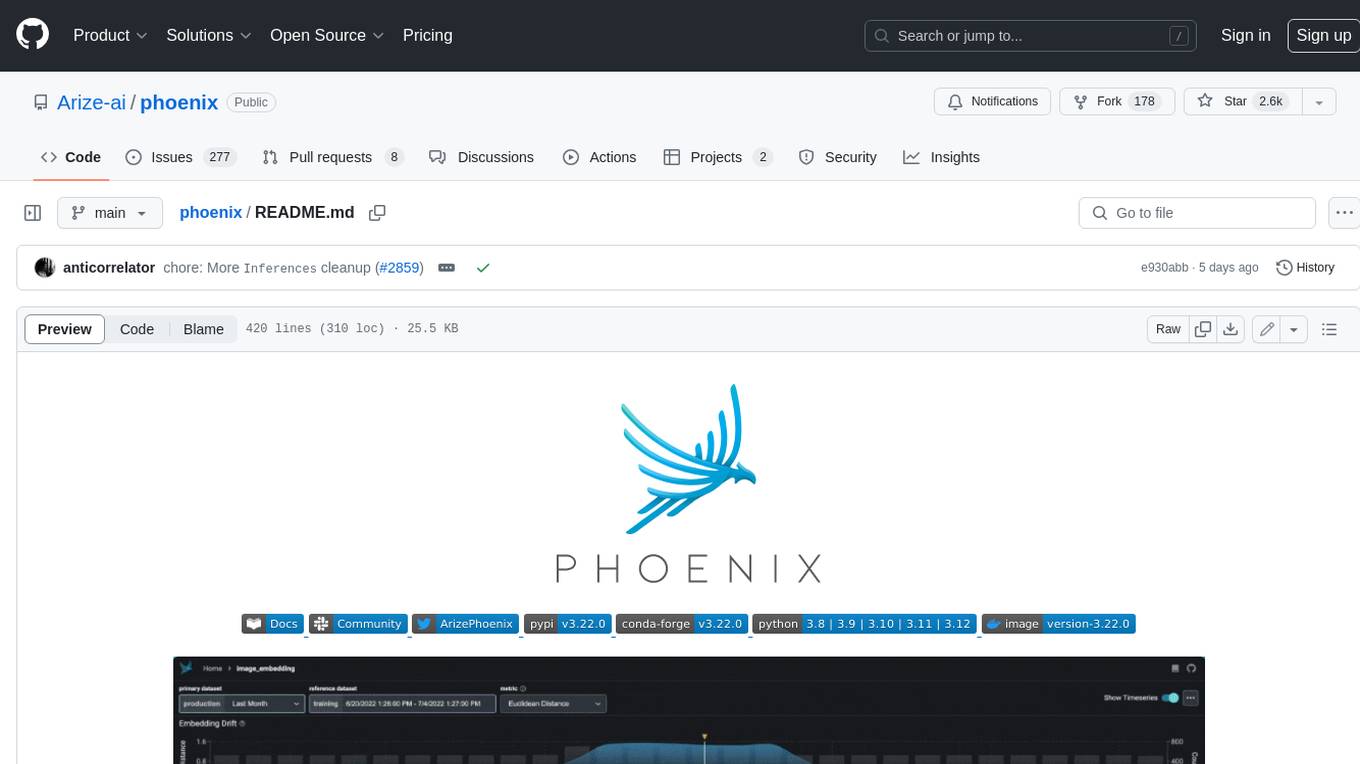
phoenix
Phoenix is a tool that provides MLOps and LLMOps insights at lightning speed with zero-config observability. It offers a notebook-first experience for monitoring models and LLM Applications by providing LLM Traces, LLM Evals, Embedding Analysis, RAG Analysis, and Structured Data Analysis. Users can trace through the execution of LLM Applications, evaluate generative models, explore embedding point-clouds, visualize generative application's search and retrieval process, and statistically analyze structured data. Phoenix is designed to help users troubleshoot problems related to retrieval, tool execution, relevance, toxicity, drift, and performance degradation.
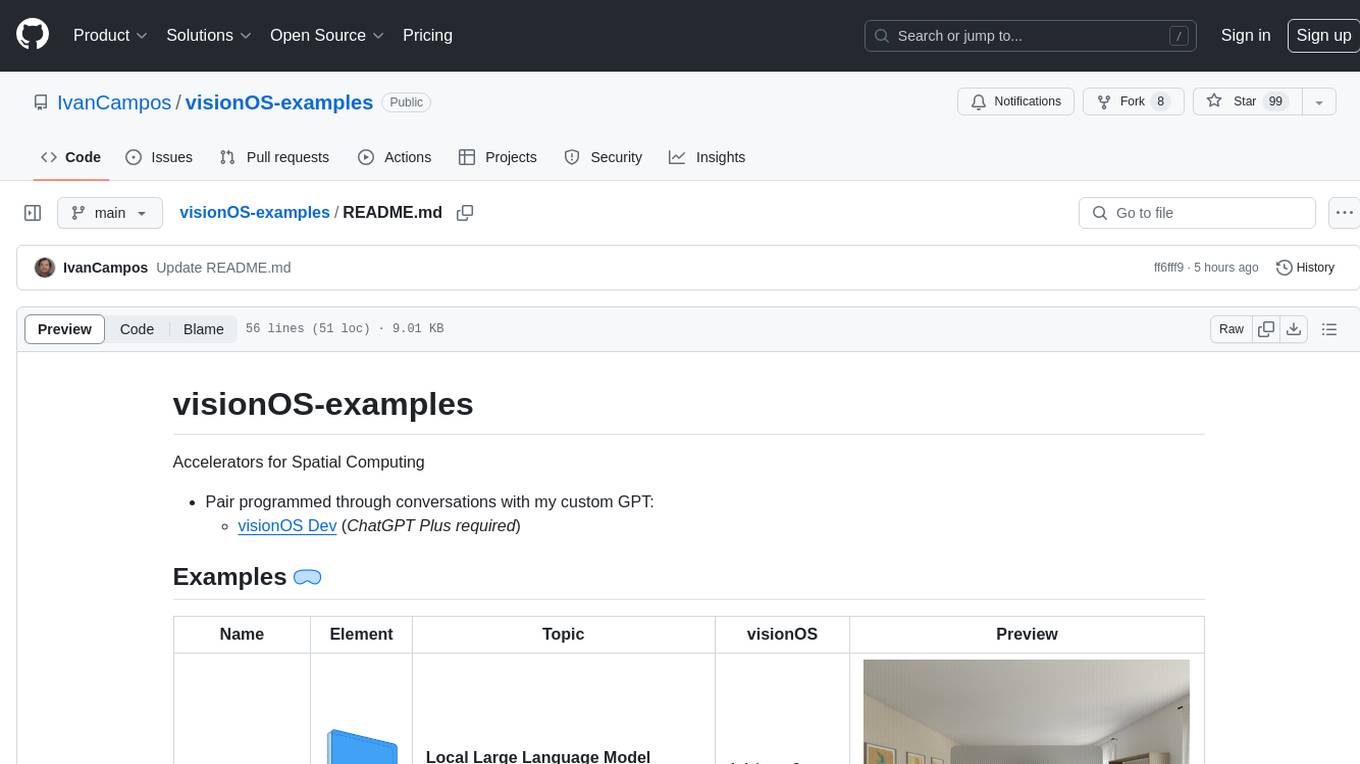
visionOS-examples
visionOS-examples is a repository containing accelerators for Spatial Computing. It includes examples such as Local Large Language Model, Chat Apple Vision Pro, WebSockets, Anchor To Head, Hand Tracking, Battery Life, Countdown, Plane Detection, Timer Vision, and PencilKit for visionOS. The repository showcases various functionalities and features for Apple Vision Pro, offering tools for developers to enhance their visionOS apps with capabilities like hand tracking, plane detection, and real-time cryptocurrency prices.
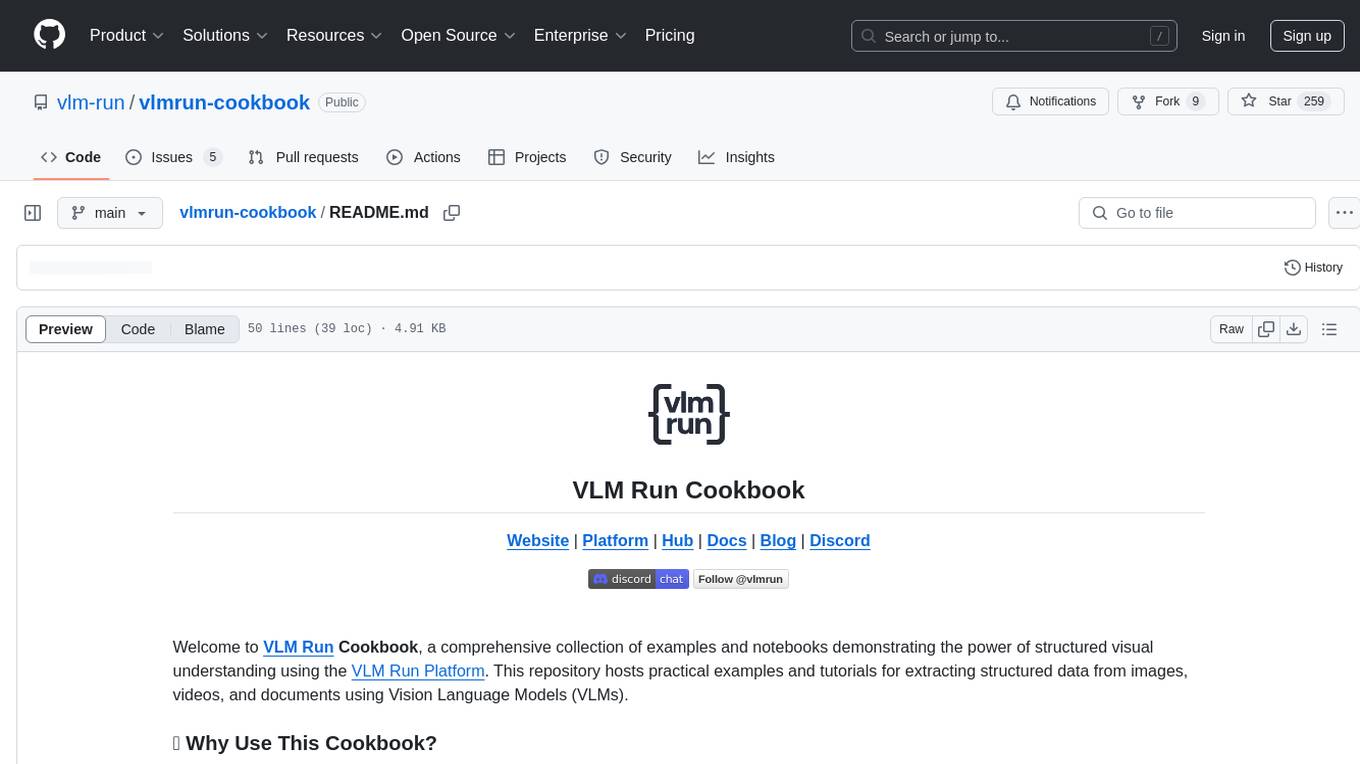
vlmrun-cookbook
VLM Run Cookbook is a repository containing practical examples and tutorials for extracting structured data from images, videos, and documents using Vision Language Models (VLMs). It offers comprehensive Colab notebooks demonstrating real-world applications of VLM Run, with complete code and documentation for easy adaptation. The examples cover various domains such as financial documents and TV news analysis.
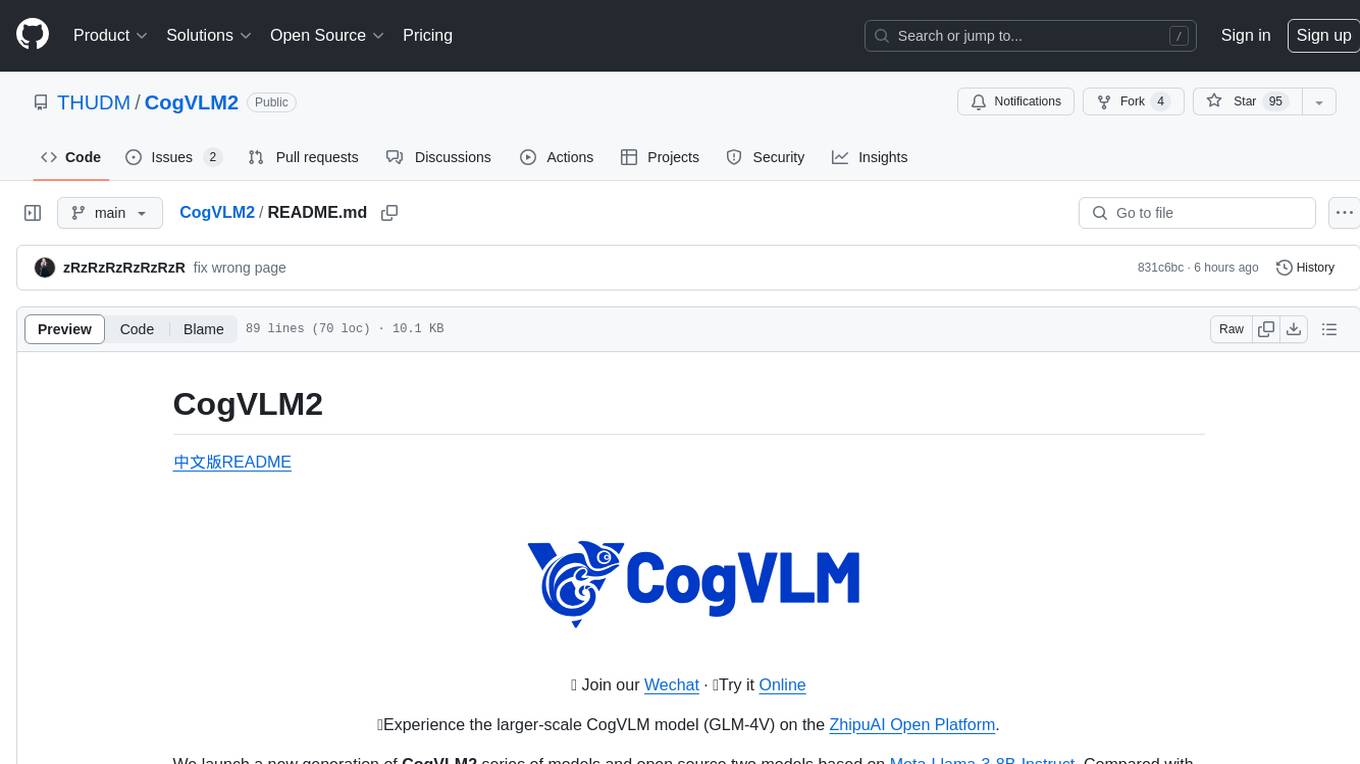
CogVLM2
CogVLM2 is a new generation of open source models that offer significant improvements in benchmarks such as TextVQA and DocVQA. It supports 8K content length, image resolution up to 1344 * 1344, and both Chinese and English languages. The project provides basic calling methods, fine-tuning examples, and OpenAI API format calling examples to help developers quickly get started with the model.
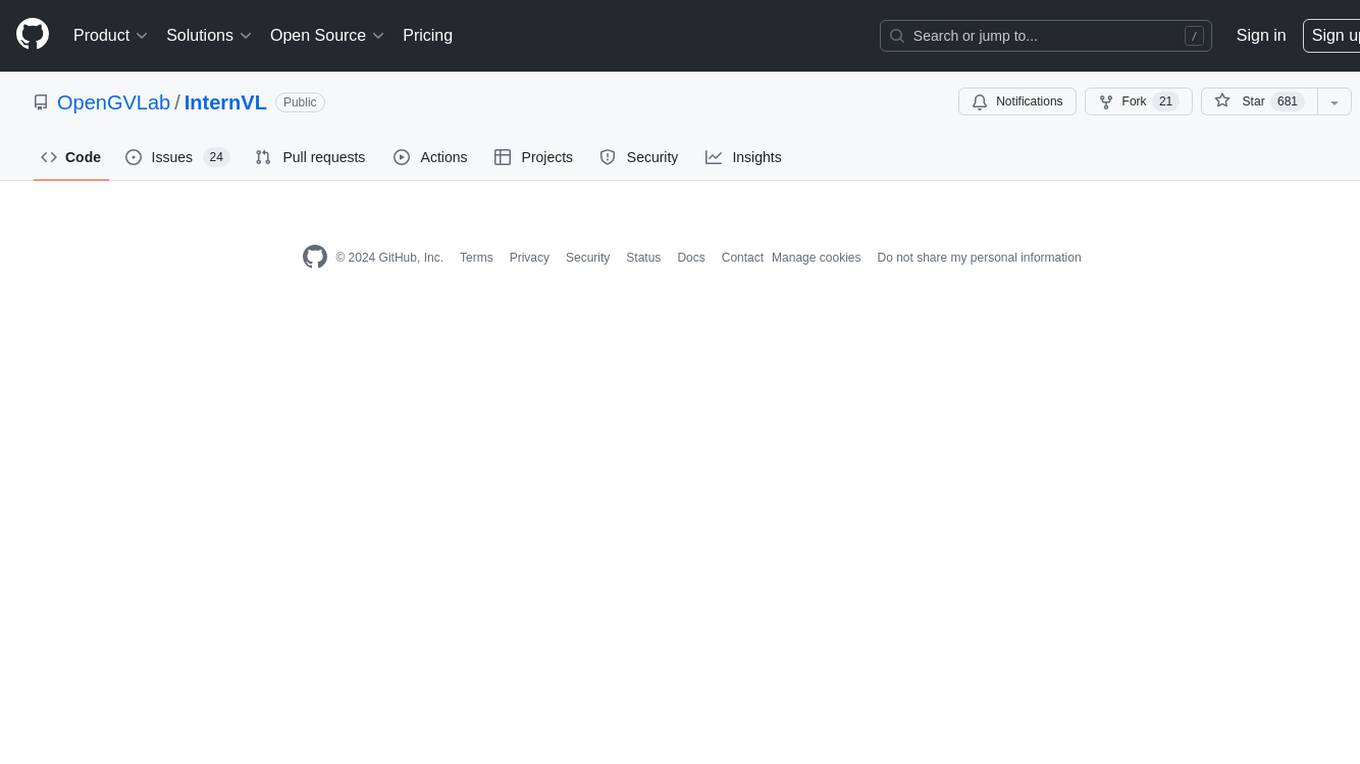
InternVL
InternVL scales up the ViT to _**6B parameters**_ and aligns it with LLM. It is a vision-language foundation model that can perform various tasks, including: **Visual Perception** - Linear-Probe Image Classification - Semantic Segmentation - Zero-Shot Image Classification - Multilingual Zero-Shot Image Classification - Zero-Shot Video Classification **Cross-Modal Retrieval** - English Zero-Shot Image-Text Retrieval - Chinese Zero-Shot Image-Text Retrieval - Multilingual Zero-Shot Image-Text Retrieval on XTD **Multimodal Dialogue** - Zero-Shot Image Captioning - Multimodal Benchmarks with Frozen LLM - Multimodal Benchmarks with Trainable LLM - Tiny LVLM InternVL has been shown to achieve state-of-the-art results on a variety of benchmarks. For example, on the MMMU image classification benchmark, InternVL achieves a top-1 accuracy of 51.6%, which is higher than GPT-4V and Gemini Pro. On the DocVQA question answering benchmark, InternVL achieves a score of 82.2%, which is also higher than GPT-4V and Gemini Pro. InternVL is open-sourced and available on Hugging Face. It can be used for a variety of applications, including image classification, object detection, semantic segmentation, image captioning, and question answering.
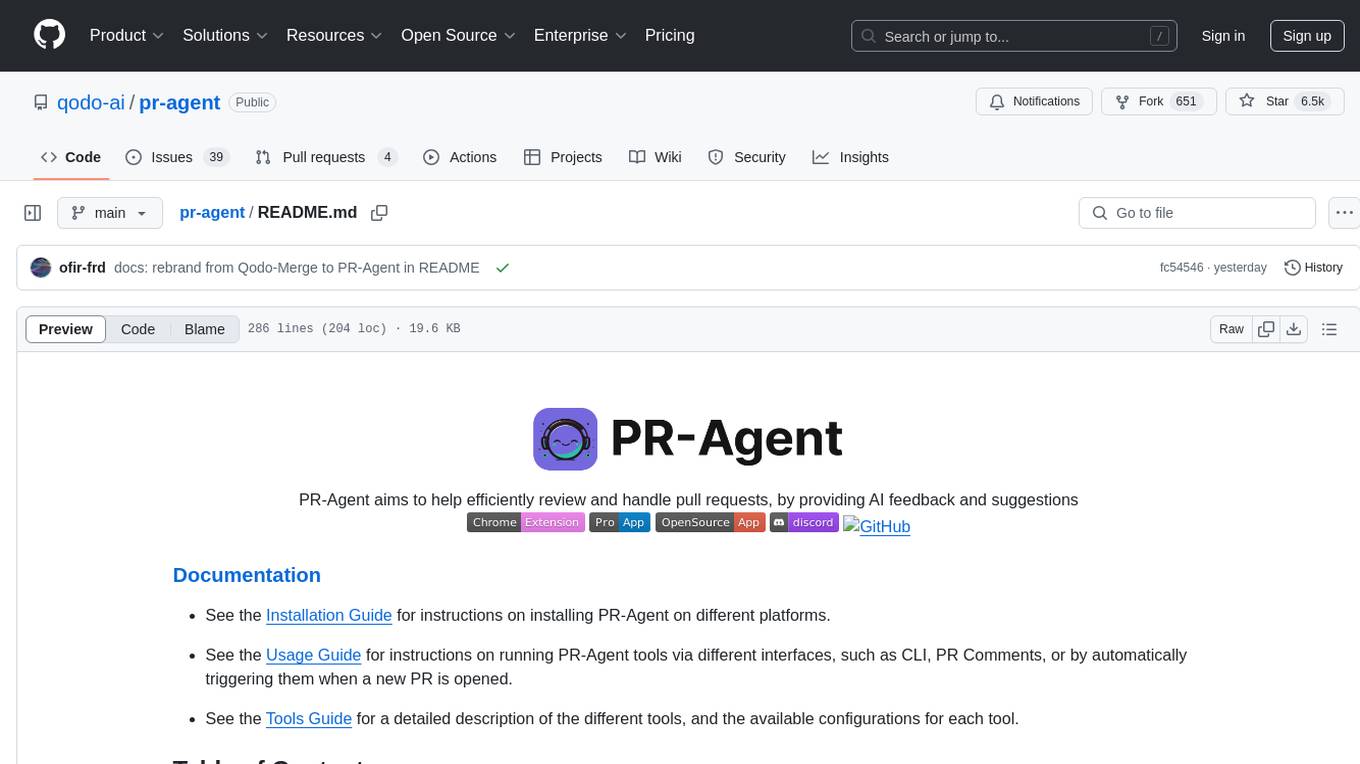
pr-agent
PR-Agent is a tool designed to assist in efficiently reviewing and handling pull requests by providing AI feedback and suggestions. It offers various tools such as Review, Describe, Improve, Ask, Update CHANGELOG, and more, with the ability to run them via different interfaces like CLI, PR Comments, or automatically triggering them when a new PR is opened. The tool supports multiple git platforms and models, emphasizing real-life practical usage and modular, customizable tools.
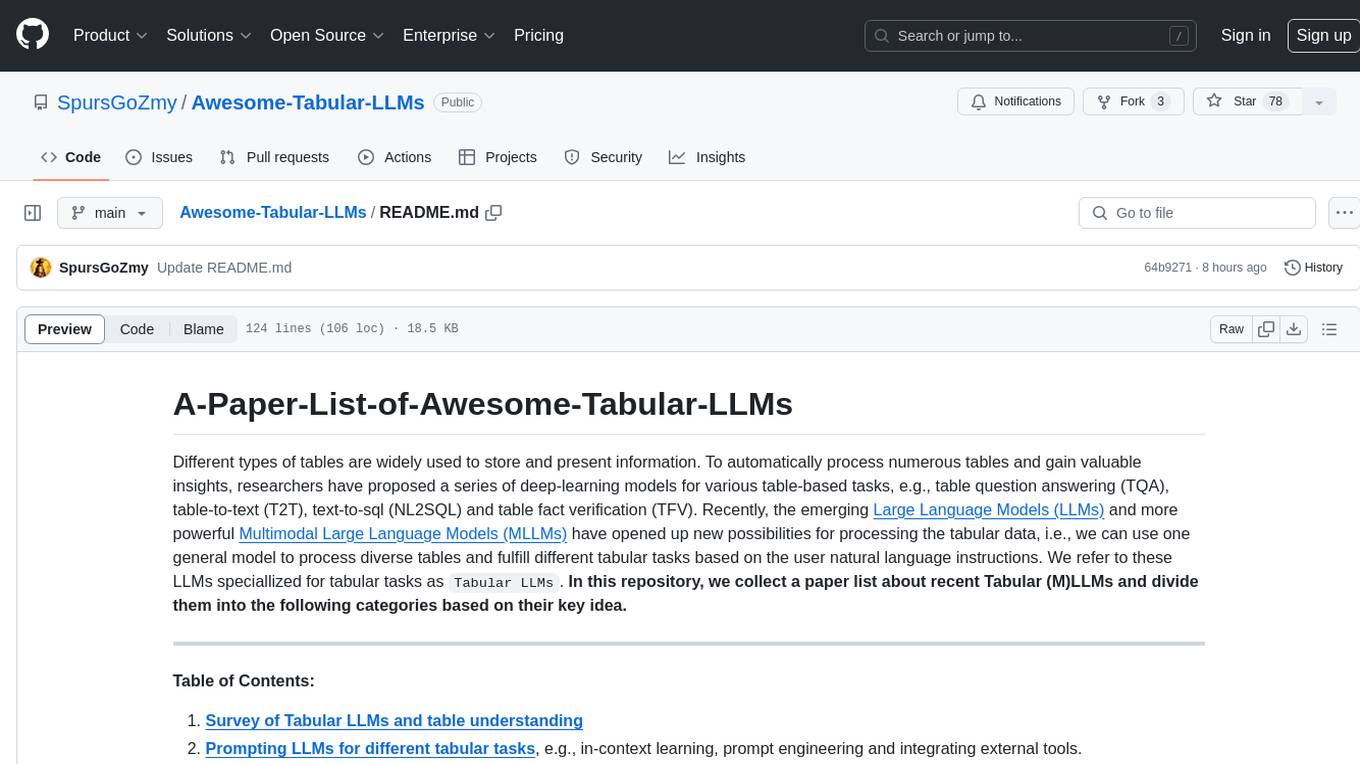
Awesome-Tabular-LLMs
This repository is a collection of papers on Tabular Large Language Models (LLMs) specialized for processing tabular data. It includes surveys, models, and applications related to table understanding tasks such as Table Question Answering, Table-to-Text, Text-to-SQL, and more. The repository categorizes the papers based on key ideas and provides insights into the advancements in using LLMs for processing diverse tables and fulfilling various tabular tasks based on natural language instructions.
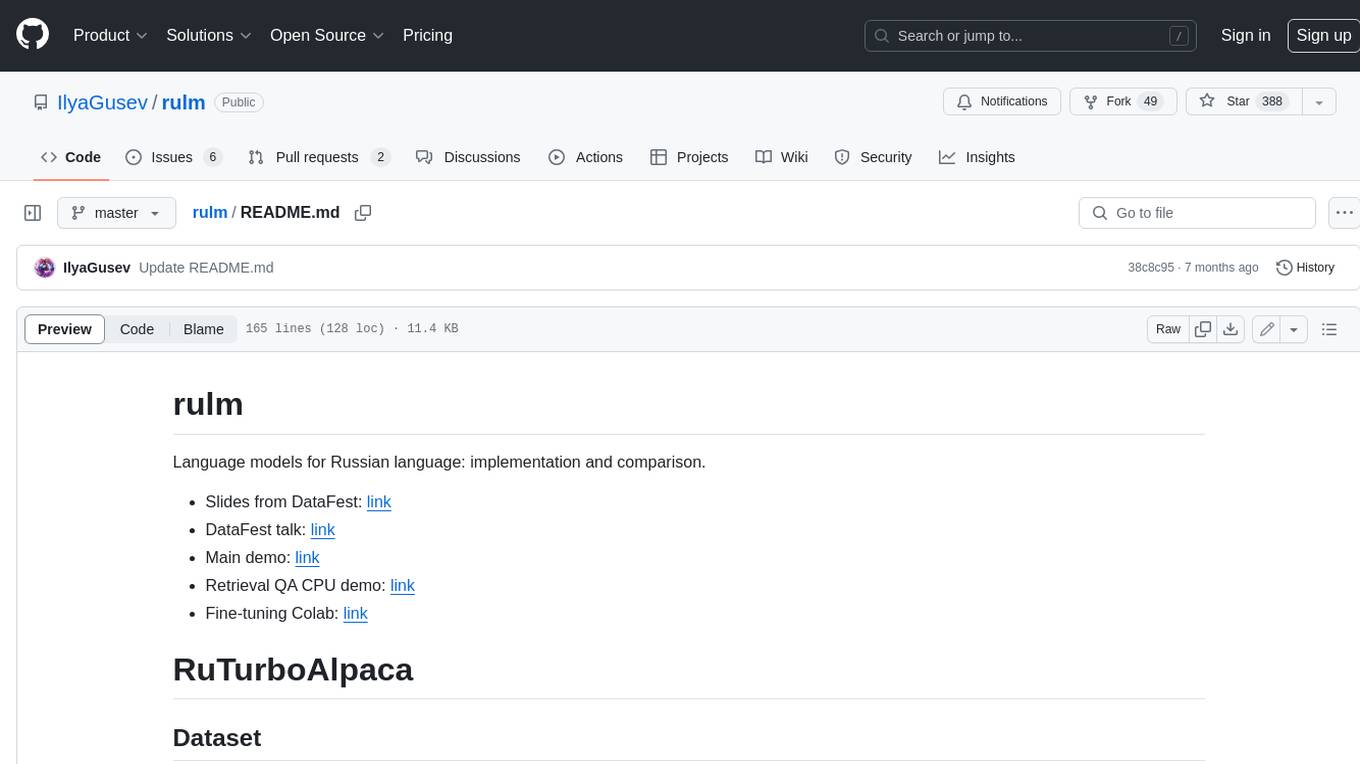
rulm
This repository contains language models for the Russian language, as well as their implementation and comparison. The models are trained on a dataset of ChatGPT-generated instructions and chats in Russian. They can be used for a variety of tasks, including question answering, text generation, and translation.
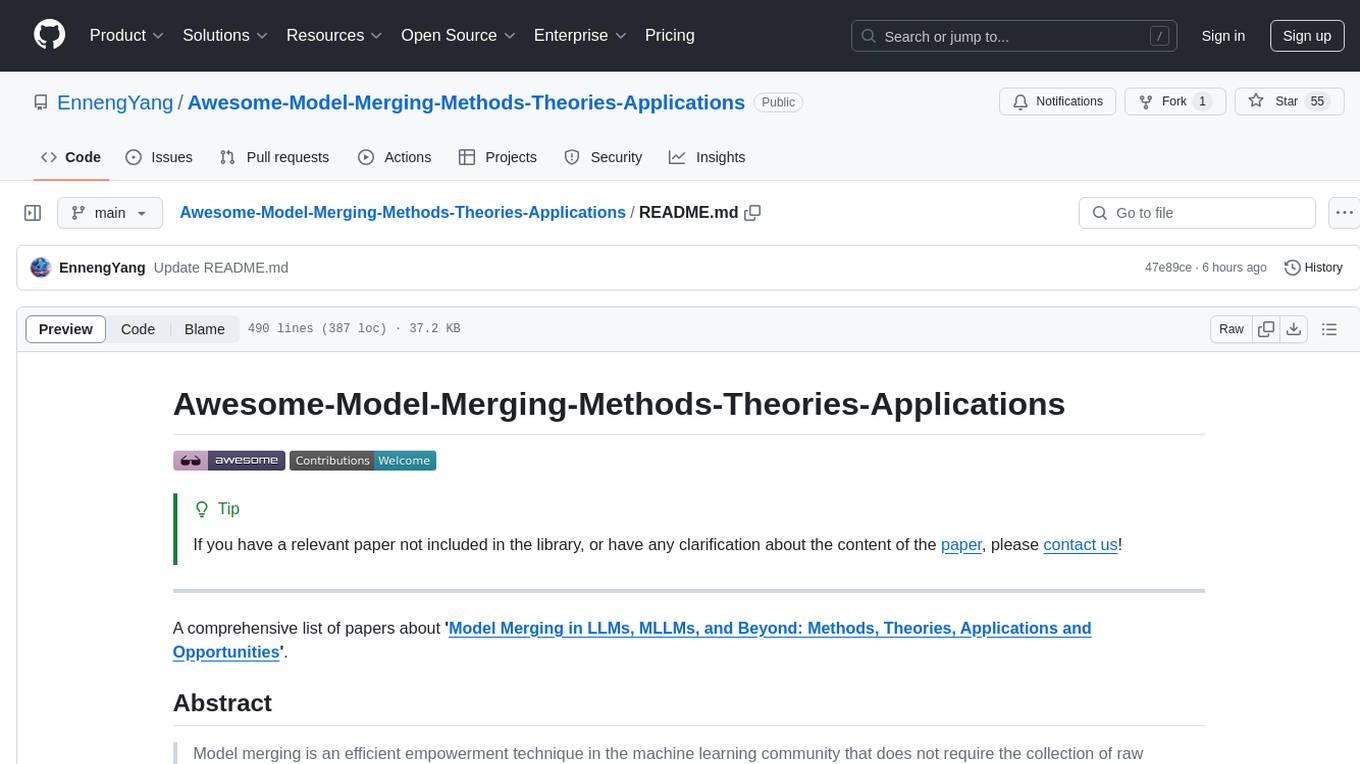
Awesome-Model-Merging-Methods-Theories-Applications
A comprehensive repository focusing on 'Model Merging in LLMs, MLLMs, and Beyond', providing an exhaustive overview of model merging methods, theories, applications, and future research directions. The repository covers various advanced methods, applications in foundation models, different machine learning subfields, and tasks like pre-merging methods, architecture transformation, weight alignment, basic merging methods, and more.
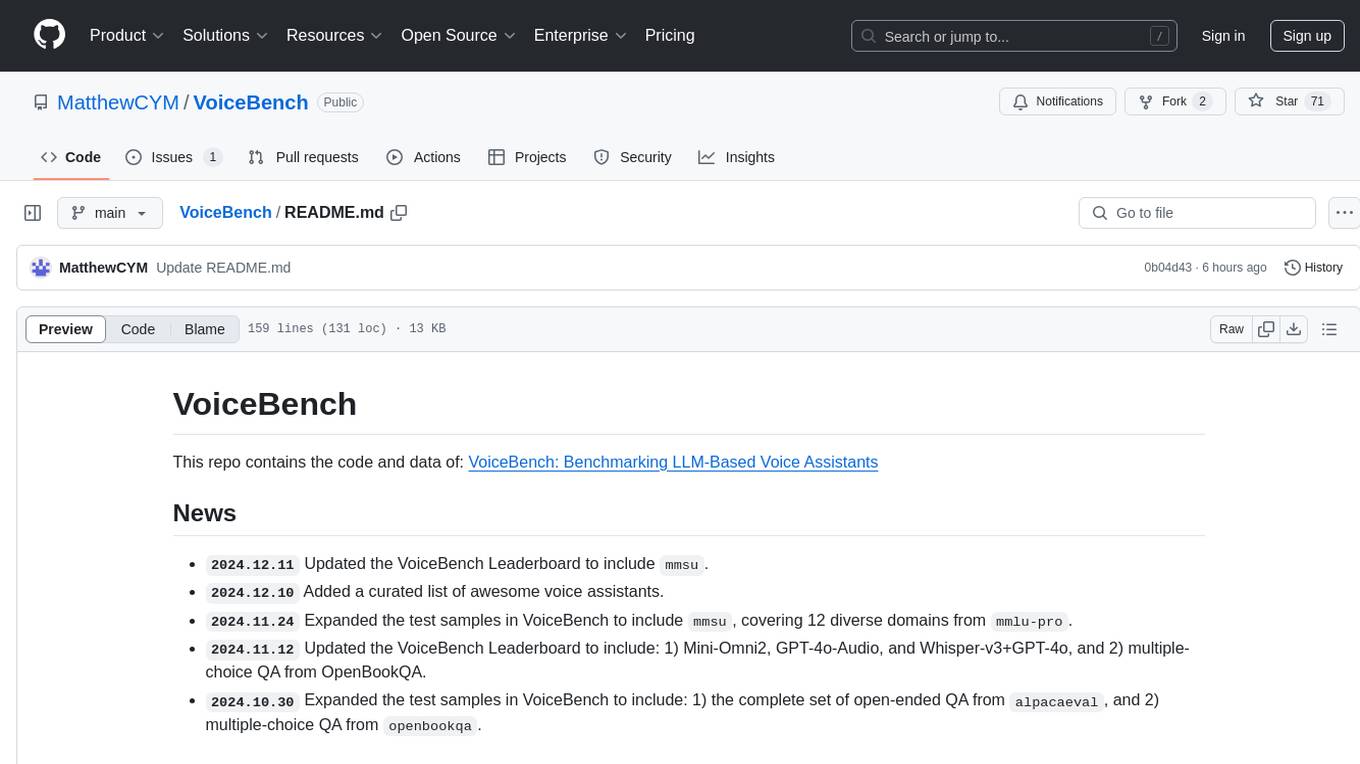
VoiceBench
VoiceBench is a repository containing code and data for benchmarking LLM-Based Voice Assistants. It includes a leaderboard with rankings of various voice assistant models based on different evaluation metrics. The repository provides setup instructions, datasets, evaluation procedures, and a curated list of awesome voice assistants. Users can submit new voice assistant results through the issue tracker for updates on the ranking list.
For similar tasks

MMOS
MMOS (Mix of Minimal Optimal Sets) is a dataset designed for math reasoning tasks, offering higher performance and lower construction costs. It includes various models and data subsets for tasks like arithmetic reasoning and math word problem solving. The dataset is used to identify minimal optimal sets through reasoning paths and statistical analysis, with a focus on QA-pairs generated from open-source datasets. MMOS also provides an auto problem generator for testing model robustness and scripts for training and inference.
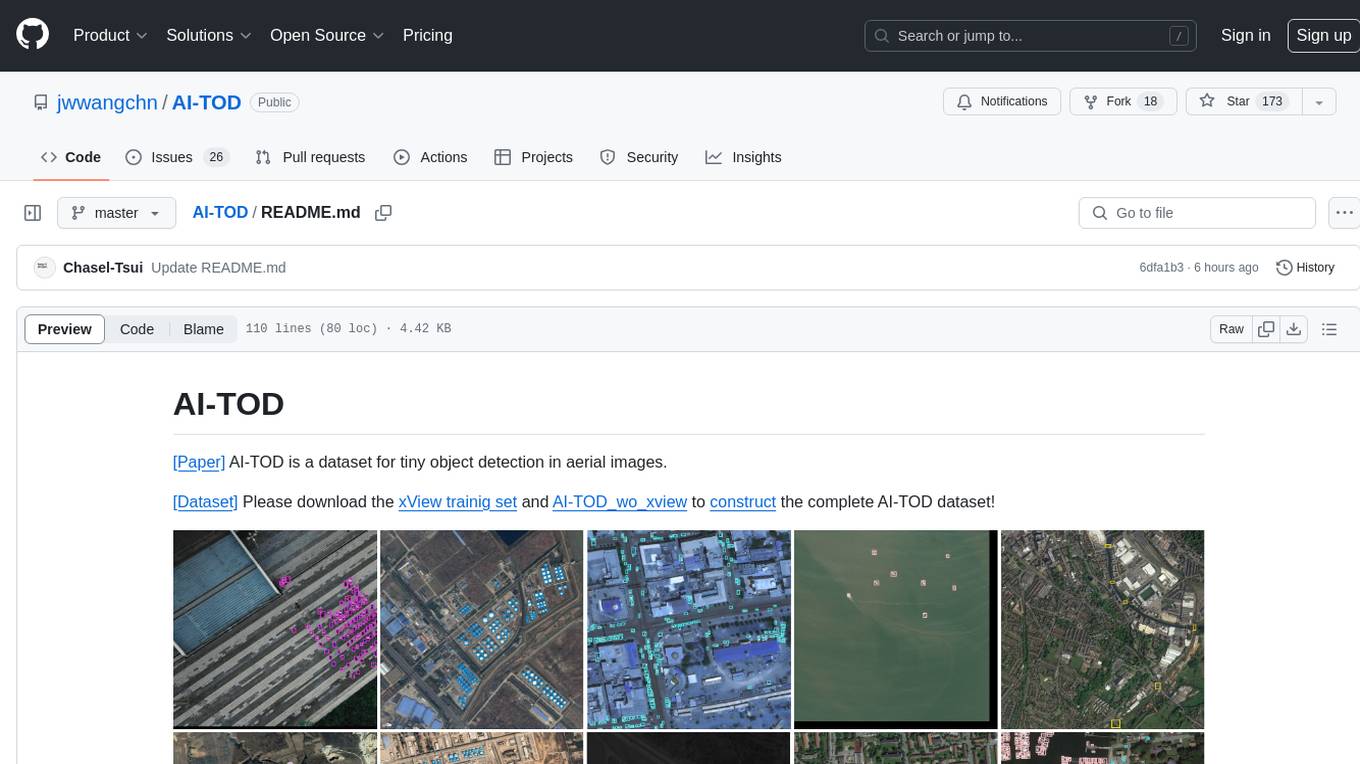
AI-TOD
AI-TOD is a dataset for tiny object detection in aerial images, containing 700,621 object instances across 28,036 images. Objects in AI-TOD are smaller with a mean size of 12.8 pixels compared to other aerial image datasets. To use AI-TOD, download xView training set and AI-TOD_wo_xview, then generate the complete dataset using the provided synthesis tool. The dataset is publicly available for academic and research purposes under CC BY-NC-SA 4.0 license.
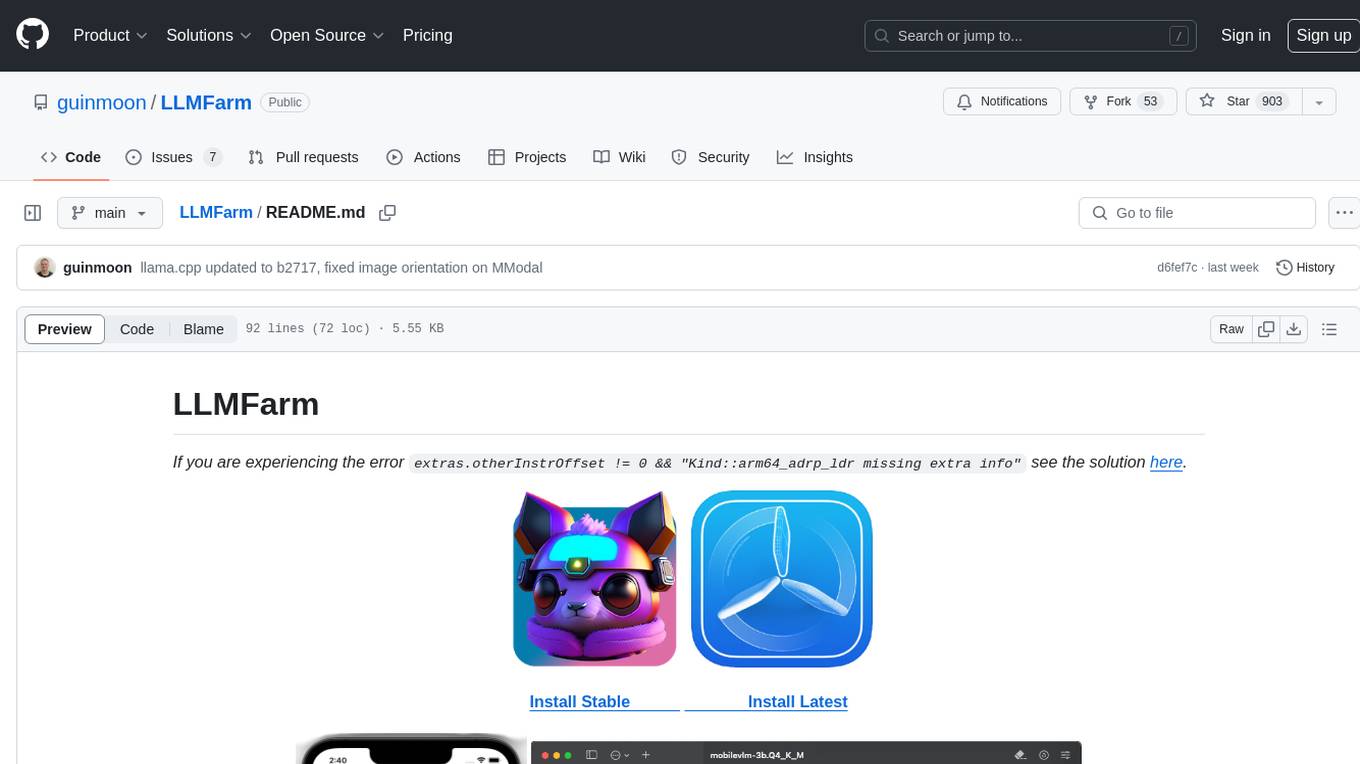
LLMFarm
LLMFarm is an iOS and MacOS app designed to work with large language models (LLM). It allows users to load different LLMs with specific parameters, test the performance of various LLMs on iOS and macOS, and identify the most suitable model for their projects. The tool is based on ggml and llama.cpp by Georgi Gerganov and incorporates sources from rwkv.cpp by saharNooby, Mia by byroneverson, and LlamaChat by alexrozanski. LLMFarm features support for MacOS (13+) and iOS (16+), various inferences and sampling methods, Metal compatibility (not supported on Intel Mac), model setting templates, LoRA adapters support, LoRA finetune support, LoRA export as model support, and more. It also offers a range of inferences including LLaMA, GPTNeoX, Replit, GPT2, Starcoder, RWKV, Falcon, MPT, Bloom, and others. Additionally, it supports multimodal models like LLaVA, Obsidian, and MobileVLM. Users can customize inference options through JSON files and access supported models for download.
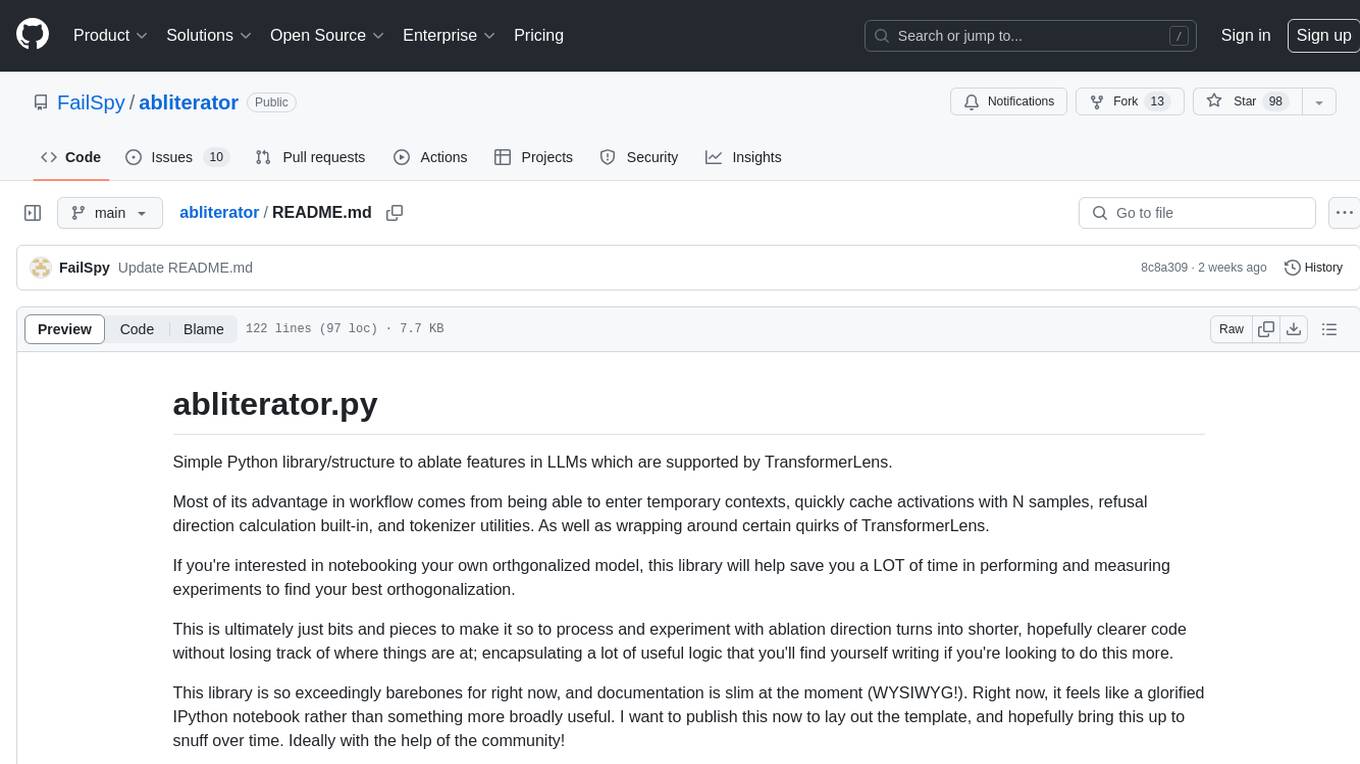
abliterator
abliterator.py is a simple Python library/structure designed to ablate features in large language models (LLMs) supported by TransformerLens. It provides capabilities to enter temporary contexts, cache activations with N samples, calculate refusal directions, and includes tokenizer utilities. The library aims to streamline the process of experimenting with ablation direction turns by encapsulating useful logic and minimizing code complexity. While currently basic and lacking comprehensive documentation, the library serves well for personal workflows and aims to expand beyond feature ablation to augmentation and additional features over time with community support.
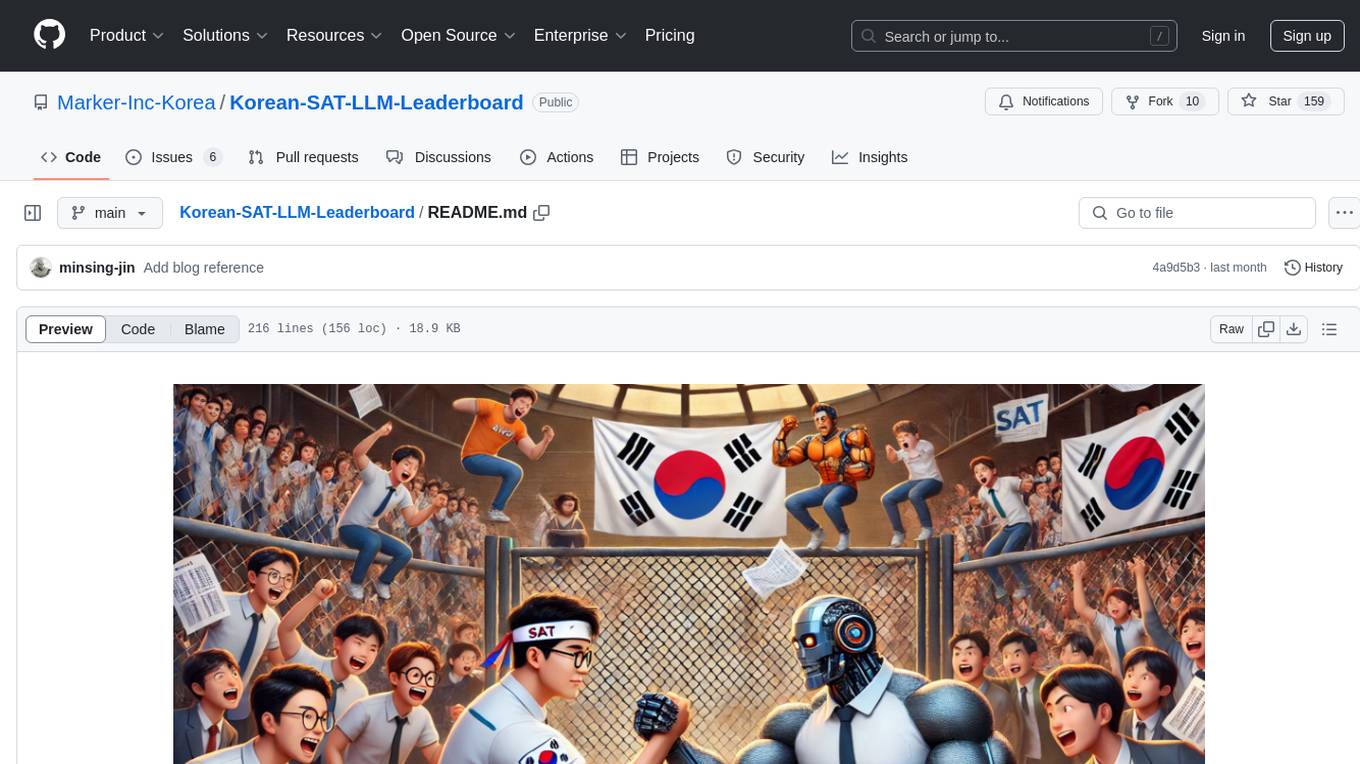
Korean-SAT-LLM-Leaderboard
The Korean SAT LLM Leaderboard is a benchmarking project that allows users to test their fine-tuned Korean language models on a 10-year dataset of the Korean College Scholastic Ability Test (CSAT). The project provides a platform to compare human academic ability with the performance of large language models (LLMs) on various question types to assess reading comprehension, critical thinking, and sentence interpretation skills. It aims to share benchmark data, utilize a reliable evaluation dataset curated by the Korea Institute for Curriculum and Evaluation, provide annual updates to prevent data leakage, and promote open-source LLM advancement for achieving top-tier performance on the Korean CSAT.

LMeterX
LMeterX is a professional large language model performance testing platform that supports model inference services based on large model inference frameworks and cloud services. It provides an intuitive Web interface for creating and managing test tasks, monitoring testing processes, and obtaining detailed performance analysis reports to support model deployment and optimization.

ai-on-gke
This repository contains assets related to AI/ML workloads on Google Kubernetes Engine (GKE). Run optimized AI/ML workloads with Google Kubernetes Engine (GKE) platform orchestration capabilities. A robust AI/ML platform considers the following layers: Infrastructure orchestration that support GPUs and TPUs for training and serving workloads at scale Flexible integration with distributed computing and data processing frameworks Support for multiple teams on the same infrastructure to maximize utilization of resources
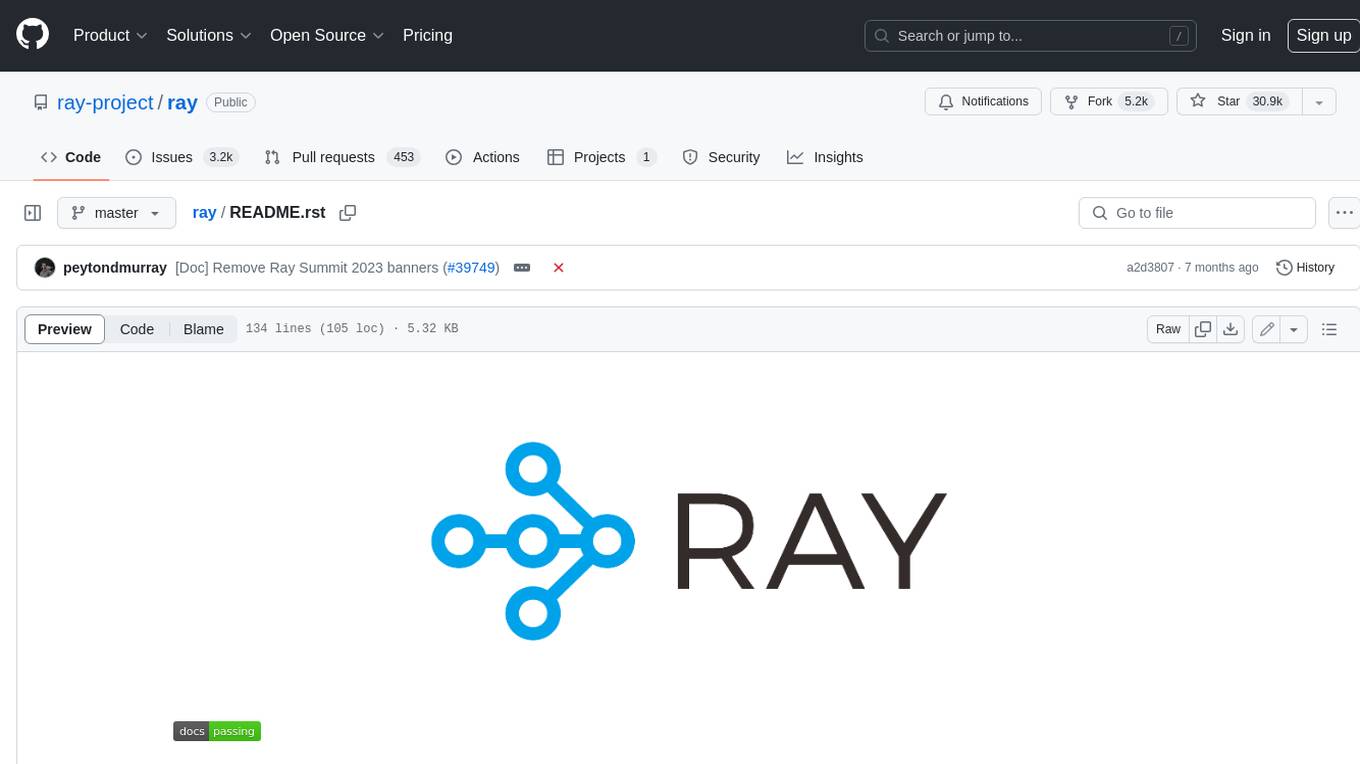
ray
Ray is a unified framework for scaling AI and Python applications. It consists of a core distributed runtime and a set of AI libraries for simplifying ML compute, including Data, Train, Tune, RLlib, and Serve. Ray runs on any machine, cluster, cloud provider, and Kubernetes, and features a growing ecosystem of community integrations. With Ray, you can seamlessly scale the same code from a laptop to a cluster, making it easy to meet the compute-intensive demands of modern ML workloads.
For similar jobs

sweep
Sweep is an AI junior developer that turns bugs and feature requests into code changes. It automatically handles developer experience improvements like adding type hints and improving test coverage.

teams-ai
The Teams AI Library is a software development kit (SDK) that helps developers create bots that can interact with Teams and Microsoft 365 applications. It is built on top of the Bot Framework SDK and simplifies the process of developing bots that interact with Teams' artificial intelligence capabilities. The SDK is available for JavaScript/TypeScript, .NET, and Python.

ai-guide
This guide is dedicated to Large Language Models (LLMs) that you can run on your home computer. It assumes your PC is a lower-end, non-gaming setup.

classifai
Supercharge WordPress Content Workflows and Engagement with Artificial Intelligence. Tap into leading cloud-based services like OpenAI, Microsoft Azure AI, Google Gemini and IBM Watson to augment your WordPress-powered websites. Publish content faster while improving SEO performance and increasing audience engagement. ClassifAI integrates Artificial Intelligence and Machine Learning technologies to lighten your workload and eliminate tedious tasks, giving you more time to create original content that matters.

chatbot-ui
Chatbot UI is an open-source AI chat app that allows users to create and deploy their own AI chatbots. It is easy to use and can be customized to fit any need. Chatbot UI is perfect for businesses, developers, and anyone who wants to create a chatbot.

BricksLLM
BricksLLM is a cloud native AI gateway written in Go. Currently, it provides native support for OpenAI, Anthropic, Azure OpenAI and vLLM. BricksLLM aims to provide enterprise level infrastructure that can power any LLM production use cases. Here are some use cases for BricksLLM: * Set LLM usage limits for users on different pricing tiers * Track LLM usage on a per user and per organization basis * Block or redact requests containing PIIs * Improve LLM reliability with failovers, retries and caching * Distribute API keys with rate limits and cost limits for internal development/production use cases * Distribute API keys with rate limits and cost limits for students

uAgents
uAgents is a Python library developed by Fetch.ai that allows for the creation of autonomous AI agents. These agents can perform various tasks on a schedule or take action on various events. uAgents are easy to create and manage, and they are connected to a fast-growing network of other uAgents. They are also secure, with cryptographically secured messages and wallets.

griptape
Griptape is a modular Python framework for building AI-powered applications that securely connect to your enterprise data and APIs. It offers developers the ability to maintain control and flexibility at every step. Griptape's core components include Structures (Agents, Pipelines, and Workflows), Tasks, Tools, Memory (Conversation Memory, Task Memory, and Meta Memory), Drivers (Prompt and Embedding Drivers, Vector Store Drivers, Image Generation Drivers, Image Query Drivers, SQL Drivers, Web Scraper Drivers, and Conversation Memory Drivers), Engines (Query Engines, Extraction Engines, Summary Engines, Image Generation Engines, and Image Query Engines), and additional components (Rulesets, Loaders, Artifacts, Chunkers, and Tokenizers). Griptape enables developers to create AI-powered applications with ease and efficiency.






